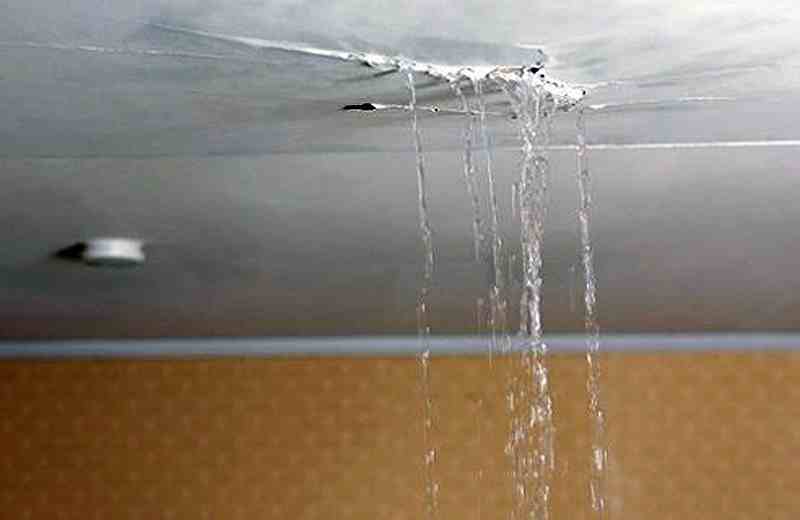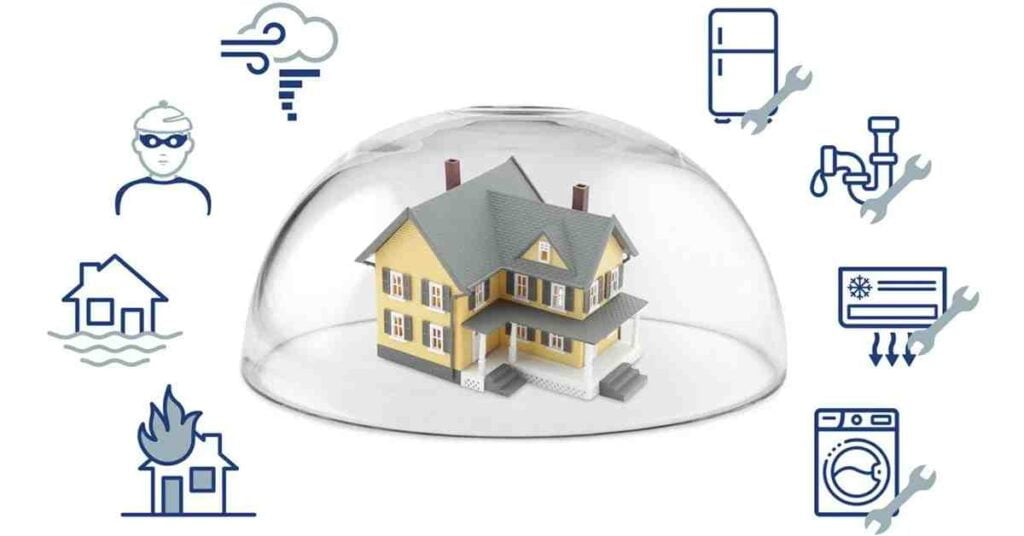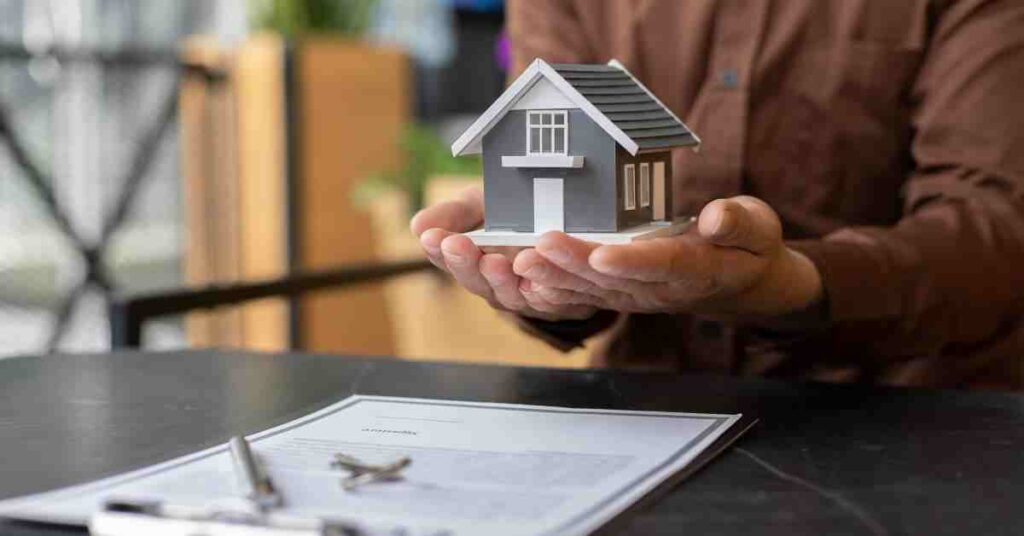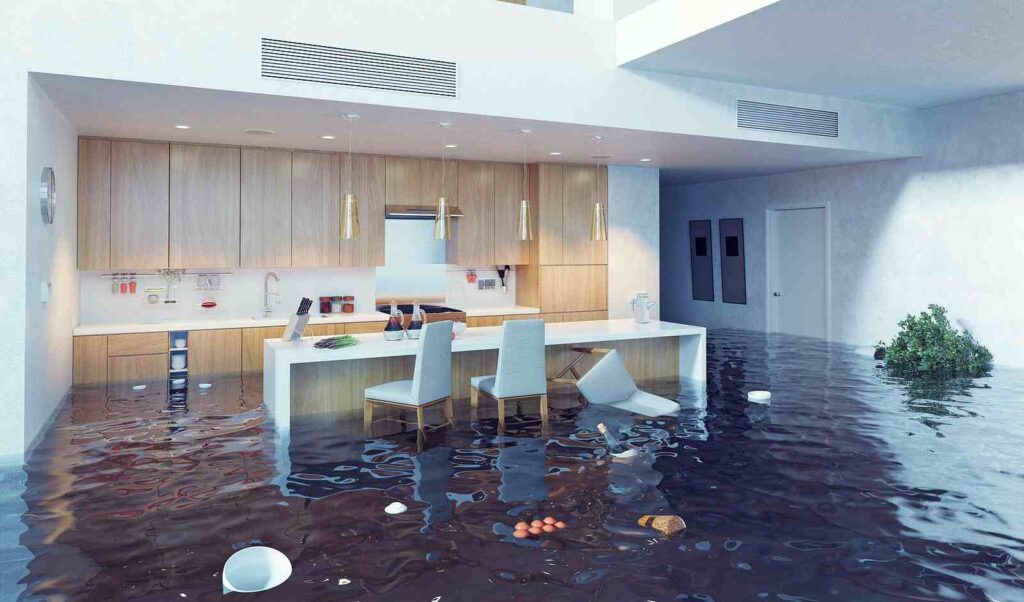Homeownership comes with its fair share of responsibilities, and maintaining the integrity of your home is paramount among them. One common issue homeowners face is roof leaks, which can cause significant damage if not addressed promptly. But when a leak springs, a question often arises – ‘Does homeowners insurance cover roof leaks?’ This is a crucial question, as the answer can significantly impact the financial burden of the repair. In this article, we delve into the intricacies of homeowners insurance policies, their relationship with roof leaks, and what homeowners need to know to navigate these potentially murky waters. So, whether you’re a new homeowner or have been one for years, read on to gain valuable insights into this important aspect of home maintenance and insurance coverage.
What is Homeowners Insurance?

Homeowners insurance is a type of property insurance that provides financial protection against disasters. It’s a package policy, which means it covers both damage to your property and your liability or legal responsibility for any injuries and property damage you or members of your family cause to other people.
Here’s a breakdown of what homeowners insurance typically covers:
- Dwelling: This covers the structure of the home. If your house is damaged or destroyed by a covered peril—like fire, hail, or vandalism—your insurance will pay for the repairs or rebuilding costs.
- Other Structures: This covers structures on your property that aren’t attached to your house, like a detached garage, tool shed, or fence.
- Personal Property: This covers the personal belongings you have in your home, like furniture, clothing, and appliances. It may also cover items that are stolen from your car or while you’re traveling.
- Liability: This covers you if someone is injured on your property and decides to sue, or if you or a family member accidentally damages someone else’s property.
- Additional Living Expenses (ALE): This covers the costs of living away from home if you cannot live there due to damage from a covered peril. It covers hotel bills, restaurant meals, and other costs, over and above your usual living expenses, incurred while your home is being rebuilt.
Why is homeowners insurance necessary? Here are a few reasons:
- Financial Protection: Homeowners insurance can protect you from potentially devastating financial loss if your home is damaged or destroyed.
- Mortgage Requirement: Most mortgage lenders require homeowners insurance to protect their investment.
- Liability Coverage: It covers legal costs if someone is injured on your property and decides to sue.
- Peace of Mind: Knowing that you are covered in case of theft, damage, or other unforeseen circumstances can provide peace of mind.
Remember, it’s always important to read your policy carefully and understand what is and isn’t covered. If you’re unsure, consult with an insurance professional.
Does Homeowners Insurance Cover Roof Leaks?

Homeowners insurance typically covers roof leaks under certain circumstances, but coverage can vary depending on the specifics of your policy and the cause of the leak. Here’s a breakdown of how homeowners insurance may cover roof leaks:
- Perils Covered: Homeowners insurance typically covers roof leaks caused by perils listed in your policy, such as windstorms, hail, fire, and sometimes even vandalism. If the leak is caused by a covered peril, your insurance provider may help cover the cost of repairing the damage to your roof and any resulting water damage to your home’s interior.
- Accidental Damage: Some policies may also cover roof leaks resulting from accidental damage, such as a fallen tree limb or other objects impacting the roof. Again, coverage depends on the terms of your specific policy.
- Wear and Tear: Generally, homeowners insurance does not cover roof leaks resulting from normal wear and tear, aging, or lack of maintenance. If your roof is damaged due to neglect or gradual deterioration over time, you’ll likely be responsible for the cost of repairs.
- Water Damage: Even if your policy covers roof leaks, it may not cover all types of resulting water damage. For example, if the leak causes mold or mildew growth, your insurance may have limitations on coverage for mold remediation.
- Policy Limits and Deductibles: It’s important to review your policy limits and deductible. Your coverage may be subject to certain limits, meaning the insurance company will only pay up to a specified amount for roof repairs or water damage. Additionally, you’ll be responsible for paying any deductible before your insurance coverage kicks in.
- Documentation and Reporting: If you discover a roof leak, it’s essential to document the damage and report it to your insurance provider as soon as possible. Take photos or videos of the leak and any resulting damage to your home’s interior. Prompt reporting can help expedite the claims process.
Before assuming coverage for a roof leak, it’s crucial to review your homeowners insurance policy carefully and consult with your insurance agent to understand what is and isn’t covered. Regular maintenance of your roof can also help prevent leaks and ensure that your insurance coverage remains intact.
Policy Exclusions and Limitations
Exclusions and limitations are important aspects of homeowners insurance policies to understand, as they can impact coverage for roof leaks. Here are some common exclusions and limitations that may apply:
- Wear and tear: Homeowners insurance typically does not cover damage caused by normal wear and tear on the roof. This means that if a roof leak is the result of aging or deterioration over time, it may not be covered by insurance.
- Lack of maintenance: Insurance policies often exclude coverage for damage that could have been prevented through proper maintenance. If a roof leak is the result of neglecting to repair minor damage or perform routine maintenance on the roof, the insurance company may deny the claim.
- Gradual damage: Some insurance policies may exclude coverage for damage that occurs gradually over time, rather than as the result of a sudden and unexpected event. If a roof leak develops slowly over several months or years, it may not be covered by insurance.
- Flood damage: Standard homeowners insurance policies typically do not cover damage caused by floods. If a roof leak is the result of flooding, homeowners may need to purchase a separate flood insurance policy to obtain coverage.
- Earth movement: Damage caused by earthquakes, landslides, and other types of earth movement is often excluded from homeowners insurance policies. If a roof leak is caused by one of these events, it may not be covered unless the homeowner has purchased additional coverage.
- Negligence: Insurance policies may exclude coverage for damage that is the result of intentional or reckless actions by the homeowner. If a roof leak is caused by the homeowner’s negligence, such as failing to properly maintain the roof or causing damage during a DIY repair attempt, it may not be covered by insurance.
Remember, every insurance policy is different, and coverage can vary widely. It’s important to read your policy carefully to understand what is and isn’t covered.
The Importance of Regular Roof Maintenance
Regular roof maintenance is crucial for several reasons:
- Preventing Leaks and Damage: Regular inspections and maintenance can help identify potential issues before they become major problems. For example, replacing worn-out shingles can prevent leaks that could lead to more extensive water damage inside your home.
- Extending Your Roof’s Lifespan: Just like regular oil changes can help extend the life of your car, regular roof maintenance can help your roof last as long as possible. This can save you money in the long run, as roof replacement can be a significant expense.
- Maintaining Your Home’s Value: A well-maintained roof can contribute to your home’s curb appeal and overall value. If you ever decide to sell your home, potential buyers will likely appreciate the fact that the roof has been well cared for.
- Insurance Coverage: As we’ve discussed, homeowners insurance may not cover damage caused by neglect or lack of maintenance. Regular roof maintenance can help ensure that if you ever need to make a claim for a roof leak, it won’t be denied due to these reasons.
- Energy Efficiency: A well-maintained roof can contribute to your home’s energy efficiency, potentially saving you money on heating and cooling costs.
Can I Cancel PMI If My Home Value Increases?
In conclusion, regular roof maintenance plays a crucial role in preventing leaks and ensuring that any damage is likely to be covered by insurance. It’s an investment that pays off in the protection of your home, the longevity of your roof, and the potential savings on your energy bills. Remember, when in doubt, it’s always a good idea to consult with a roofing professional.
How to File a Claim for a Roof Leak
Filing a claim for a roof leak with your homeowners insurance company involves several steps:
- Document the Damage: As soon as you notice a leak, start documenting. Take pictures and videos of the leak itself and any damage it has caused to your home or belongings.
- Mitigate Further Damage: Take steps to prevent further damage. This might involve placing a bucket under the leak, moving belongings out of the way, or even making temporary repairs. Keep receipts of any expenses related to this.
- Review Your Policy: Before you file a claim, review your policy to understand what is covered and what your deductible is. This can help you determine whether it’s worth it to file a claim.
- Contact Your Insurance Company: Notify your insurance company about the leak as soon as possible. You can usually do this online, over the phone, or through a mobile app.
- Fill Out Claim Forms: Your insurance company will provide you with claim forms to fill out. Be as detailed as possible when describing the damage.
- Adjuster Inspection: An insurance adjuster may come to inspect the damage. They will assess the cause of the leak and the extent of the damage to determine how much the insurance company should pay for repairs.
- Receive Payout: If your claim is approved, you’ll receive a payout from your insurance company to make repairs. The amount you receive will be the cost of repairs minus your deductible.
Remember, every insurance company’s process may be slightly different, so it’s important to contact your insurance company for specific instructions.
FAQs
Q 1. What is a deductible in homeowners insurance?
Ans. A deductible in homeowners insurance is the amount you pay out of pocket before your insurance coverage kicks in. For example, if you have a $1,000 deductible and you file a claim for $5,000 in damage, you would pay the first $1,000 and your insurance company would pay the remaining $4,000.
Q 2. How does the age of my roof affect my homeowners insurance?
Ans. The age of your roof can significantly impact your homeowners insurance. Older roofs are more likely to be damaged and may not withstand severe weather as well as newer ones. As a result, if your roof is old, you may face higher premiums or even denial of coverage.
Q 3. What steps can I take to maintain my roof?
Ans. Regular inspections, cleaning gutters, removing debris, checking for damage after severe weather, and promptly repairing any damage found are all part of maintaining your roof.
Q 4. Are there specific types of roofs that homeowners insurance prefers or discounts for?
Ans. Some insurance companies may offer discounts for certain types of roofs that are more resistant to damage, such as metal roofs or impact-resistant shingles. It’s best to check with your insurance provider for specifics.
Q 5. How can I prove to my insurance company that my roof leak was caused by a covered peril?
Ans. Documentation is key. Take photos or videos of the damage, keep records of repairs, maintenance, and inspections, and provide any additional evidence that supports your claim, such as weather reports for storm damage.
Q 6. How does homeowners insurance handle claims for gradual damage?
Ans. Gradual damage, like slow, persistent leaks or damage occurring over time, is typically not covered by homeowners insurance. Insurance is designed to cover sudden and accidental damage.
Conclusion
In conclusion, understanding the nuances of homeowners insurance and its coverage for roof leaks is crucial for every homeowner. While insurance policies can provide significant financial protection, it’s important to remember that not all roof leaks may be covered. Factors such as the cause of the leak, the condition of the roof, and the specifics of your policy can all affect whether a claim will be approved.
Regular roof maintenance can not only prevent leaks but also ensure that any damage is likely to be covered by insurance. As a homeowner, staying informed about your insurance coverage and taking proactive steps to maintain your home can save you from unexpected costs and give you peace of mind. Always consult with an insurance professional to understand your policy and coverage better.

Join Shubham, a finance enthusiast with a mission to empower readers with the knowledge and tools to achieve financial freedom. Discover smart financial advice and unlock your financial potential.


